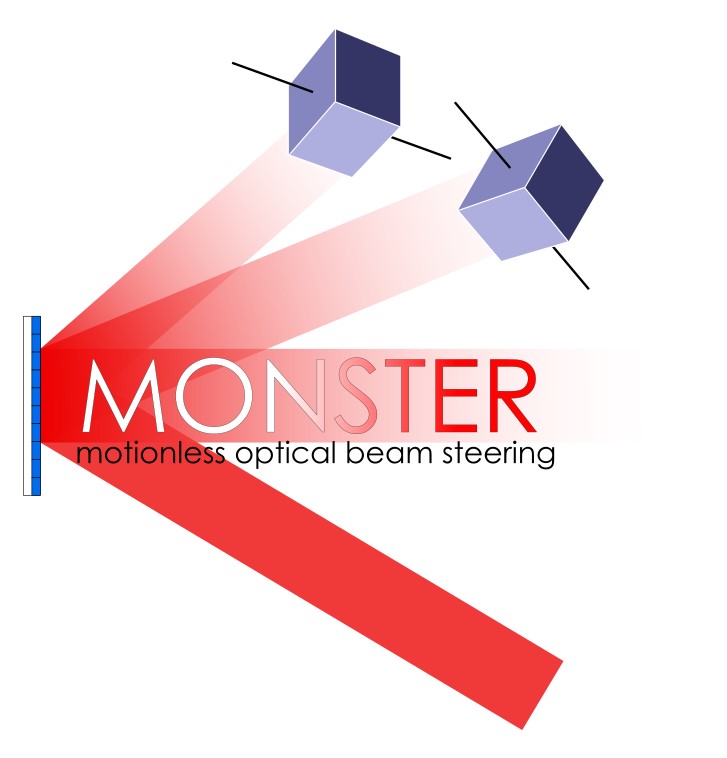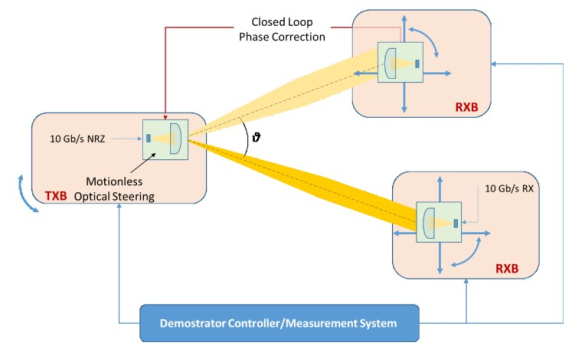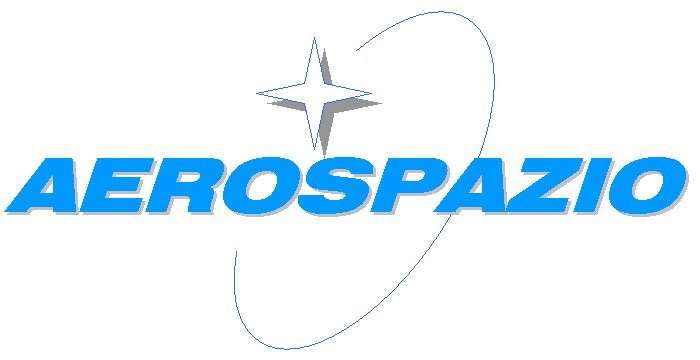
-
StatusCompleted
-
Status date2024-08-28
-
Activity Code5G.016
The project aims at demonstrating a motionless optical beam steering system suitable for Direct-To-Earth communication terminals, which combines both coarse and fine pointing functionalities in a single electro-optical component (a Spatial Light Modulator). The project has several objectives:
- To identify suitable SLMs that can realize the optical beam steering functionality.
- To explore different optical configurations and determine the performance limits of the motionless optical beam steering system in respect to a set of parameters such as the power efficiency within a given Field-of-View, the pointing stability, resolution and accuracy, the repointing time, the power stability, the wavefront error and the beam divergence
- To assess experimentally how such a motionless optical beam steering system compares with traditional multi-stage pointing systems, especially in terms of the field of regard that state-of-the-art electro-optical devices can cover.
- To realize a test-bed demonstrating the technology capability, i.e a 10 Gb/s optical transmitter breadboard featuring the motionless steering system, able to establishing an optical link alternatively between two separated receiving breadboards.
- To determine if the motionless optical beam steering system can be effectively operated in space (both by testing relevant devices in vacuum and under radiation exposure and across different temperature ranges).
The main challenge addressed in this activity is to design and develop realize the motionless optical beam steering system around the technical specifications and verify if the set of performances are uniform within the largest possible FOV, without requiring real-time adaptive corrections. This will be verified by equipping the test-bed with a metrology system.
The benefits introduced by the adoption of the motion-less beam steering system over the competing opto-mechanical ones are:
- Inertia-free system, assuring no compensation needed by the attitude control system, increasingly important factor as the mass of the satellite/spacecraft decreases.
- Increased slew rate over large steering angles, since to switch between different steering angles (diffractions masks) it is not necessary to go through all the intermediate directions.
- Simultaneous steering of multiple beams exploiting the inherent linearity of the diffraction against beams having different wavelength. This would allow the connection of different terminals (WDM mesh network topologies).
- Wavefront control allowed by the high-resolution LCoS pixel density thanks to which complicated phase patterns are applied to the incident wavefront. Aberrations introduced by the optics through which the output beam passes can be corrected; alternatively, if the system is used as receiver, atmosphere disturbances could be compensated.
The motionless optical beam steering system will be developed around a set of base specifications that may be summarised as in the following:
- FoV: +/-8°x8°.
- Repointing time: < 100 ms (regardless of the initial-ending direction).
- Pointing Accuracy: 8 µrad.
- Pointing Stability: 8 µrad.
- Pointing Resolution: 8 µrad.
- Wavefront Error < λ/4 P.V. (over the full field-of-view).
The system architecture is summarized in the following picture:

The Motionless Optical Beam Steering System will be the core element of an optical transmitter (+2 W, 10 Gb/s @ 1550 nm). The transmitter will be able establish an optical communication link with the two receiving breadboards which are placed within the field-of-regard of the transmitter breadboard. The demonstrator will be able to assess:
- Temperature stabilize the SLM for a complete characterization of potential correlations.
- The useful field-of-regard, by measuring the transmitted power across a two-dimensional field-of-view.
- The wavefront quality, by using a real-time wavefront error measurement, which communicate in closed loop with the transmitter to adaptively apply the due corrections, if needed.
- The pointing stability, accuracy and resolution.
- The switching time between the two optical receivers.
The three breadboards will be operated by a single controller allowing also to gather measured data from all the sensor/measurement systems.
Milestone 1: Project Kick-Off (KO)
Milestone 2: Technical Specification Review (TSR)
Milestone 3: Technology Trade-off Review (TTR)
Milestone 4: Preliminary Design Review (PDR)
Milestone 5: Detailed Design Review (DDR)
Milestone 6: Implementation and Verification Plan Review (IVR)
Milestone 7: Test Readiness Review (TRR)
Milestone 8: Test Campaign Review (TCR)
Milestone 9: Final Review (FR)
Milestone 10: Final Presentation (FP)
Completed.



